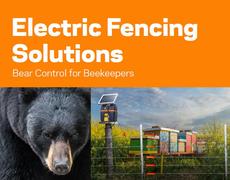AN UPPER Hunter cattle backgrounding property that achieves annual beef production rates of close to 1000 kilograms a hectare has hit the market to enable its owner-developer to embrace a new rural venture.
Ken Arnott, the Southern Highlands-based principal of financial services firm Arnott Capital, has built up “Creswell Park” from a modest house block into a 10-property aggregation of 1741 hectares (4300 acres).
It was the fact that his father (also Ken) had once owned the original “Creswell Park” house block before heading to Moree to grow cotton, that inspired Mr Arnott to use it as the base of a serious aggregation.
During the ensuing 10 years since buying that original block, he has acquired nine further adjoining blocks (held under 20 titles in all) to bring the aggregation to its present substantial size.
In the process, with his manager Rob Scott, he has undertaken extensive development with investment in pastures, fencing, infrastructure and water, to bring the property to a high pitch of productivity.
This is the package now being offered for sale by expressions of interest (closing November 12) by CBRE’s Danny Thomas and Peter Etheridge.
Situated in a valley forming the head of the Pages River near Murrurundi, “Creswell Park” is highly productive country rising from rich river loams to slopes of heavy chocolate basalt.
Water is secured by a long double frontage to the Pages River and a reliable average rainfall of 1000 millimetres “plus”, assured by the property’s proximity to the Liverpool Range.
About 70 per cent of the area is cleared, of which some 520ha has been sown to a high-performance pasture mix and is intensively grazed using paddock cells and electric fencing with multiple water points.
This system has resulted in a five-fold increase in the country’s carrying capacity, enabling it to run 1400 yearling cattle on the developed country in a backgrounding operation with Allied Beef.
Cattle are introduced at about 300 kilograms liveweight and turned off at 450kg, achieving beef production rates of up to 1200kg/ha in good seasons, and averaging about 900kg/ha.
A further 620ha of country has been cleared and earmarked for similar development, with water supply and paddock mapping in place,
with a view to being sown in late summer.
In addition to the main cattle backgrounding enterprise, a flock of 1000 Dorper ewes is run on the hill country, with lambs sometimes fattened on the river flats, depending on cattle feed requirements.
Working improvements are mostly new, and include steel cattle yards with curved “V” race, steel sheep/goat yards with sheep handler, three-stand woolshed, hay and machinery sheds and a horse complex.
A brick homestead of four bedrooms, built about 20 years ago, is set in an elevated position with established gardens, gauzed verandahs, spacious living areas with vaulted ceilings, and an in-ground pool.
In addition there is a three-bedroom workers’ cottage and a lodge-style accommodation block formerly used as a monks’ retreat but now suitable for temporary workers or farmstay use.
The property manager, Rob Scott, who has overseen all the recent developments, has indicated he would be interested in staying on to continue the job, subject to negotiations with a new owner.
A new owner would also have ample opportunity to ramp up
the present operation, not only
by continuing the on-farm development work, but by annexing adjoining country recently listed for
sale.
November 15, 2015





